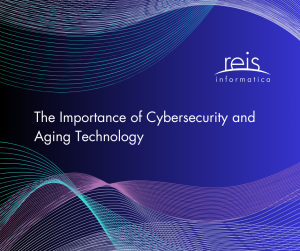As organizations strive to stay ahead in the digital race, outdated hardware poses a significant challenge to maintaining robust cybersecurity measures. Simply put, using old technology can leave your business vulnerable to cyber threats, regardless of whether the devices still function.

Why You Should Update Your Hardware
Outdated hardware can have various risks, compromising your organization’s security posture. Here are some key reasons to keep your hardware updated:
1. Security Vulnerabilities
Manufacturers often discontinue support for older devices, which means they no longer receive critical security updates and patches. Cybercriminals frequently target these unsupported devices as easy entry points into networks. For example, in January 2020, Microsoft stopped providing free security updates for Windows 7, leaving many systems vulnerable to new threats. Despite calls to upgrade to Windows 10 or newer, many devices still run outdated operating systems, according to an October 2023 Lansweeper survey.
2. Incompatible Security Protocols
Outdated hardware might not support the latest security protocols and encryption standards, creating a mismatch between the security measures in place and the hardware’s capabilities. This gap can leave systems exposed to attacks that exploit outdated encryption methods. Research from Lansweeper in 2022 showed that 42% of workstations couldn’t be updated to newer systems, posing a substantial risk to businesses that have not kept their hardware current.
3. Low Productivity and Processing Power
Modern cybersecurity threats demand robust processing power. Outdated hardware may need help to handle the computational requirements of advanced security software, leaving systems susceptible to breaches. Additionally, slow or malfunctioning devices can lead to significant productivity losses. Investing in up-to-date hardware ensures your employees have the tools to work efficiently and securely.
Enhancing Your Cybersecurity Posture
To mitigate risks associated with outdated hardware, organizations should implement the following measures:
- Continuous Monitoring: Regular audits and risk assessments help identify outdated devices and prioritize their replacement or upgrade.
- Integrating Security Measures: Deploying intrusion detection systems, advanced firewalls, and endpoint protection tools can adapt to the specific challenges posed by outdated hardware.
- Investing in Up-to-Date Hardware: Ensuring compatibility with the latest security protocols allows for implementing robust security measures without compromising system performance.
- Employee Training: Educating employees about the risks of outdated hardware and security best practices can significantly enhance your organization’s cybersecurity resilience.
Planning Ahead with Our Client Success Team
At Reis Informatica, our Client Success Team is crucial in helping you avoid potential cybersecurity threats. By planning and forecasting the replacement of aging hardware, we can help you budget for these upcoming expenditures, making them manageable and ensuring your security posture remains strong.
Our team works collaboratively to:
- Assess Vulnerabilities: Identify how many devices within your organization are at risk and create a comprehensive upgrade strategy.
- Develop a Refresh Plan: Ensure your organization functions optimally with secure, up-to-date devices.
- Provide Ongoing Support: Assist with continuous monitoring, security integration, and employee training to maintain a robust cybersecurity framework.
With our Client Success Team, you can rest assured that your business can handle the challenges of aging technology and stay secure in an ever-evolving digital landscape.
By proactively addressing outdated hardware, your organization can protect its data, improve system stability and performance, and enhance overall business processes with new functionalities.

